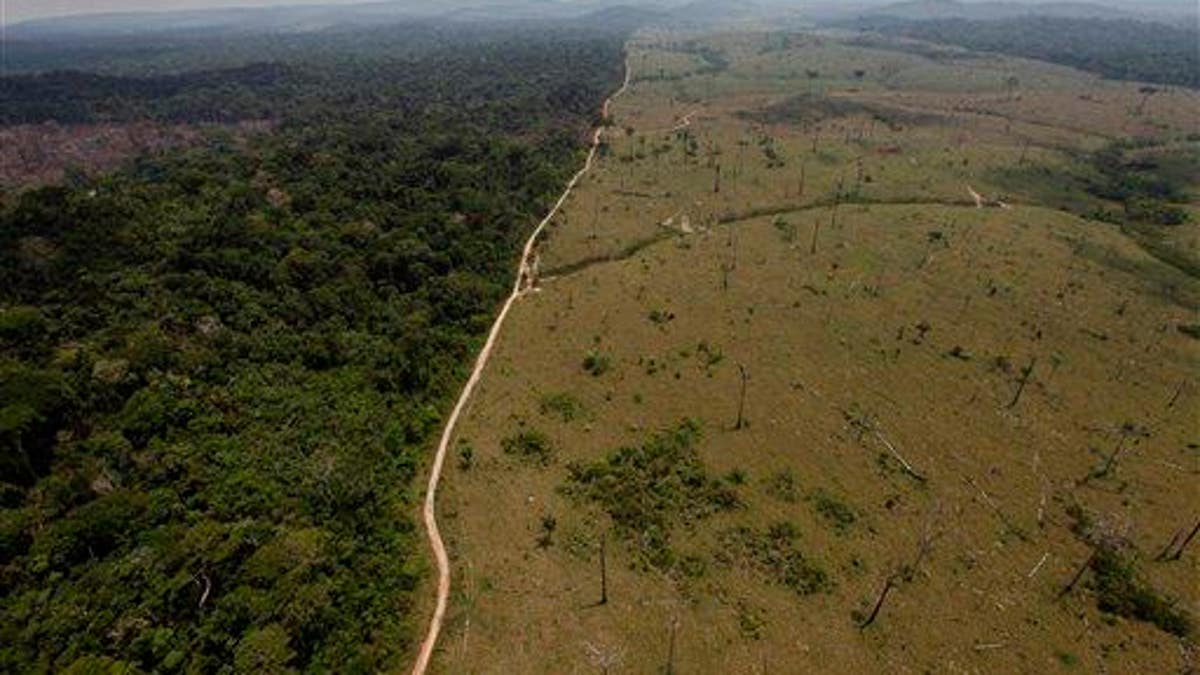
This Sept. 15, 2009 file photo shows a deforested area near Novo Progresso in Brazil's northern state of Para. (AP Photo/Andre Penner, File)
More than half of the Amazon's 15,000 tree species may be facing extinction if governments can't curb deforestation, a new study says. Researchers reached this conclusion by comparing ground-level data on trees—about their leaves, branches, diameters, and so on—to projected deforestation across the vast South American region, the New York Times reports.
The result: Between 36% and 57% of Amazonian tree species should be considered endangered by the widely accepted "Red List" standard. These trees include vital food crops as well as hundreds of species that locals need for seeds, fruits, medicines, and oils, an ecologist tells Reuters.
"We’ve never had a good idea of how many Amazonian species were vulnerable," says another expert. "And now, with this study, we’ve got an estimate." The study also found that 40% of the Amazon's forests will vanish by 2050 if deforestation continues in "business-as-usual" fashion, while 21% will disappear if governments put stronger regulations into place.
The authors stressed that the news isn't all bleak, noting that 52% of the Amazon basin falls within protected areas, the Washington Post reports. They also cite a significant decline in deforestation in the Brazilian Amazon, which makes up 60% of the Amazon region.
"A message we would like to convey is the message that there is hope," lead author Hans ter Steege tells the Christian Science Monitor. "If we can protect these areas … the Amazon could be a showcase of large-scale conservation worldwide." (The world is apparently "shrugging" during the biggest eco-disaster of our times.)
This article originally appeared on Newser: More Than Half of Amazon Tree Species Are Threatened
More From Newser
